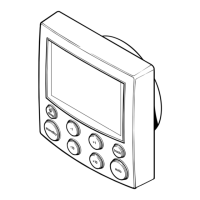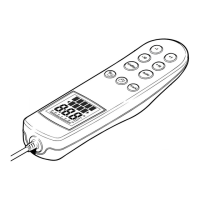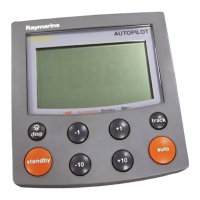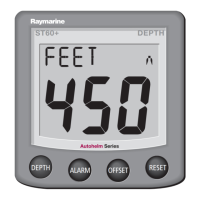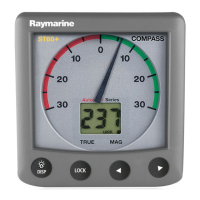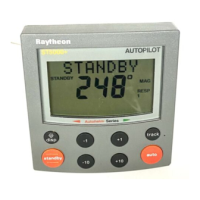3
1.4. Clutch Drive
TR10, 11 and 12 switch a nominal 12V onto the actuator clutch whenever pin 15 of
the microprocessor (IC2) is low at 0V.
1.5. SeaTalk Bus Transmit and Receive
SeaTalk transmit and receive circuitry consists of TR1, 2, 3,4, 5, 18 and 19 and their
associated components. Data Transmission is at 4800 baud with a low start bit and
line idling high. TR1 and TR2 provide high and low outputs respectively, whilst TR3
and Rl give overload protection to TR2 in the event of misconnection. TR4 and TR5
allow the microprocessor to monitor its own transmissions and also to receive data
from other units on the bus.
1.6. Fluxgate Drive
IC2 produces a series of 8KHz pulses on pin 2 which are then fed through TR6, 7
and 8 and AC coupled to the fluxgate via C3.
1.7 E
2
Prom
IC8 is an e
2
PROM (Electrically Erasable and programmable Read Only Memory)
which allows calibration values to be stored and recalled each time after power up.
Data is written to the e
2
PROM on pin 3 and read back on pin 4.
1.8 Supply Voltage Monitor
R53 and R54 scale down the supply voltage and feed it through to the analogue to
digital convertor. This enables the microprocessor to transmit a warning on the
SeaTalk bus if the supply voltage drops below 11.2V (12V system) or 22.4V (24V
system) for 10 seconds or more.
1.9. Alarm Drive
The two main warning alarms are driven via TR13, 14, 15 and 16. Components
R41,42, 79,80 and D7 and 8 are used to detect any tampering with the alarm
connections, as required by the SFIA.
2. Power Amplifier PCB Circuit Description;-
Circuit diagram 12V-figure 3
Circuit diagram 24V - figure 3
PCB layout 12V-figure 4
PCB layout 24V-figure 5
The power amplifier electronics consist of three main areas;-
1. Voltage regulator 24V-12V. (Not present on 12V boards).
2. Reverse connection protection.
3. Current amplifier bridge.
2.1. Voltage Regulator (24V systems only)
TR13 and TR14 together with associated components form a 24-12V regulator
routing 12V to the course computer board via PL1.
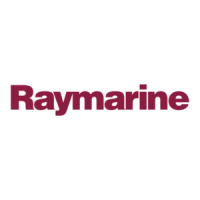
